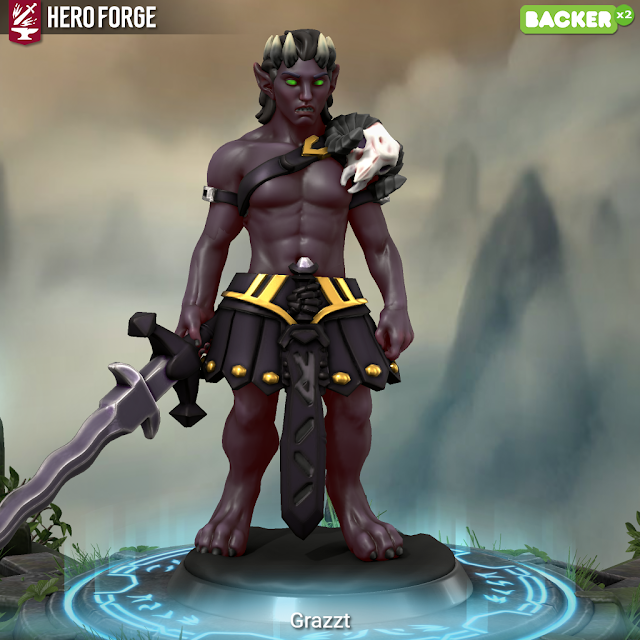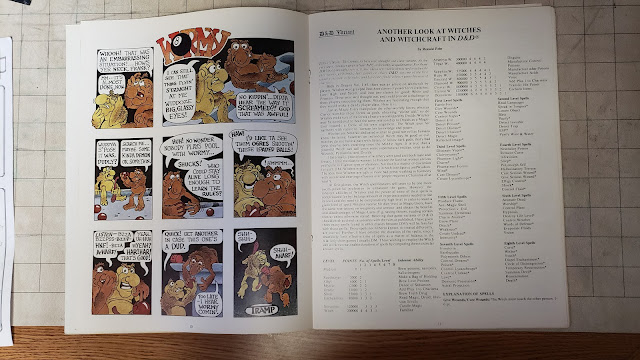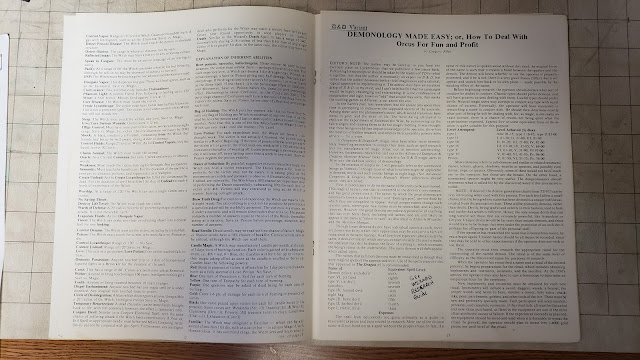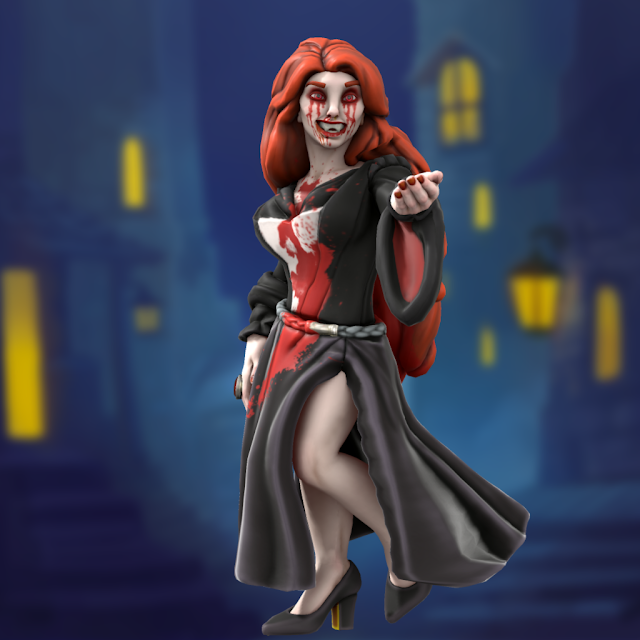But I have.
Details in a bit, but first more on character death and the great battle, the
Shadow War.
Many notable and non-notable personages made the ultimate sacrifice in the war against the demons. Skie Iskatarian, who claimed to be the great-great-granddaughter of Kas the Destroyer, died on the field of battle. She was given a heroes funeral by the Queen she would have rather seen dead, not visa versa. She was found next to a man that by all accounts she hated more than anyone, Kiev Scorpious. They were found back to back, fighting off the hordes that stormed the walls of the city.
Kurt, the affable monk that everyone seemed to like, had also been found. The great warrior Jar Tearn. Not felled by any weapon, his great age was his doom and he died on the field when his heart failed him. His wife Victoria, rushed to his side, but never quite made it. Kara Foke, King of the neighboring country offered his son to aid Glantri, and lost that son. Leaving his second oldest betrothed to the Queen. She was 9 he was 8.
Some speak of the great dark warrior Absom Sark how he was never seen again after the war. Others speak of Arachnia, the drow female warrior that roamed the lands prior to the war, but never after. They have statues as well, even if their bodies were not found. (they ran off together after the war. sometimes love is more important than honor).
But the greatest loss some say was the King's son, Johan III. Lost, and he had disgraced his family and the faith by bedding not just a common girl, but a supernatural one (she was a psychic...and something else), he had returned from the Nightmare Lands (Ravenloft) in his country's darkest hour. But the girl that was his undoing in life was his undoing in death....
--
The cool thing about being a tech-head was this great little program that my then DM and I had written for the Tandy Color Computer. It was a combat simulator. We could load ten characters and ten monsters in it at once and they would go after each other till all of one side was dead. I used that and in some cases, I also rolled up the combats on my own. Something to pass the time to be sure.
So, lots of people died so that the new generations, Quenn Celene and her future Husband Kara Werper could take center stage. And they will, or rather would have, had it not been for that troublesome girl.
Morgan.
Morgan began in my game with only her nick-name, Raven, though she did have other names. Raven Ebonflame, Raven the Hunter of the Dead, Raven the Daughter of Death (her father was nicknamed "Death Blade").
She was psychic, which was a strict taboo in my game world. Sure magic is fine, because the mage schools and guilds control that. Random psychic power? Bad juju.
So what does this girl do? She gets herself hired in the mercenaries guild and eventually hooks up with John the 3rd, future king of the land, and gets pregnant. When I was coming up with ideas to start my war, I decided that she ran off to have the kid rather than cause her lover any more grief. Trouble was Johan loved her too. Had he married her things might have been fine, but he ran off after her only to get pulled into Ravenloft. She thought he didn't care and gave birth to their daughter.
There is one other thing about Morgan. Something I decided on her first outing as a character back 1985 or so. Morgan was a killer of Vampires. She killed one at 1st level. And then proceeded to go after more.
Morgan, Raven Ebonflame, was the very first Slayer.
And then I killed her.
She was in the war and played a minor part. I remember being out on my bike one day thinking about what she might have done. Then it came to me. Morgan fought Yoln Shadowreaper, the general of the Armies of Hell. She fought him and killed him. By herself, single-handed, the girl that everyone in the game hated, changed the course of the War. She gave them victory. But it cost her her life.
Her lover, Johan went crazy and was soon killed in battle, not before taking out several dozen demons. The priest said he could not raise her, her soul was gone. A pact was made by the three most powerful remaining characters, the guild master (her father), the advisor (her teacher) and the King (father of her lover). Her father went to Hell to find her soul. In the 3rd Edition years, I worked that into the great Reckoning of Hell.
Her death was the most powerful scene I played up to that point. But years later I so regretted killing her. I thought it was a waste (and I had more personal reasons too).
Then I began
The Dragon and the Phoenix.
This was a Willow and Tara centric season for the Buffy game. In the fifth episode,
Heaven Bleeds, Willow, Tara, and Buffy travel back in time to this battle. There they meet Willow and Tara's past lives, and all three witness Morgan's battle with Yoln. I did retcon her into a Slayer, but it was not much of a change.
Now I redid the scene of her death as before, this time using the Cinematic Unisystem rules. And this time Buffy was there to help. I had players that played Tara, Willow, and Buffy, but I still played Morgan out. She still defeated Yoln, this time with her sister Slayer's help. But she still died. Somethings can't be changed I guess no matter how much you try.
As Morgan dies, she touches Tara and asks her to remember her. Morgan's soul does not go to Hell as everyone thought, but instead, it is in Tara. When the season ends she lets go of Morgan's soul to her final rest. I have a scene in later games,
Season of the Witch, to be exact, where Morgan's father meets up with Tara and is given peace.
As a DM I don't like to kill characters. People invest way too much of themselves into their personas.
Kurt, Skie. Kiev, Jar, Victoria, Sebastian, Fjalar, Johan II and Johan III. They all had memorable deaths and that had meaning.
But Morgan, Raven Ebonflame, the Daughter of Death, Hunter of the Dead, had the most important death of all. Her's changed two worlds. Set things into motion that I am still using in my games. And changed how I think about characters and how I write this stuff I do.
And hers was the hardest to do and deal with and the one I have always and will always regret the most.
To pull out my comics metaphors, she is though more of my
Barry Allen than
Tora Olfsdotter or even
Tara herself. She died and saved the world and to bring her back now would give the character less meaning. She died well and now deserves her well earned rest. Tora and Tara died too (and came back) but their deaths were meaningless and meant to shock people and ultimately empty. Mark Waid, who wrote the issues in which Tora died has since admitted it was a huge mistake as a typical and clichéd
Women in Refrigerators moment. Too bad Whedon has not had the same insight and maturity as Waid. But I took care of that on my own.
So GMs/DMs/Directors/Story Tellers?
Do you kill characters? Do you try to save them even if the dice fall on the side of the Reaper?
Yes...yes I can already here the Call of Cthulhu Keepers out there. I know your point and I know there are worse things than death.






































